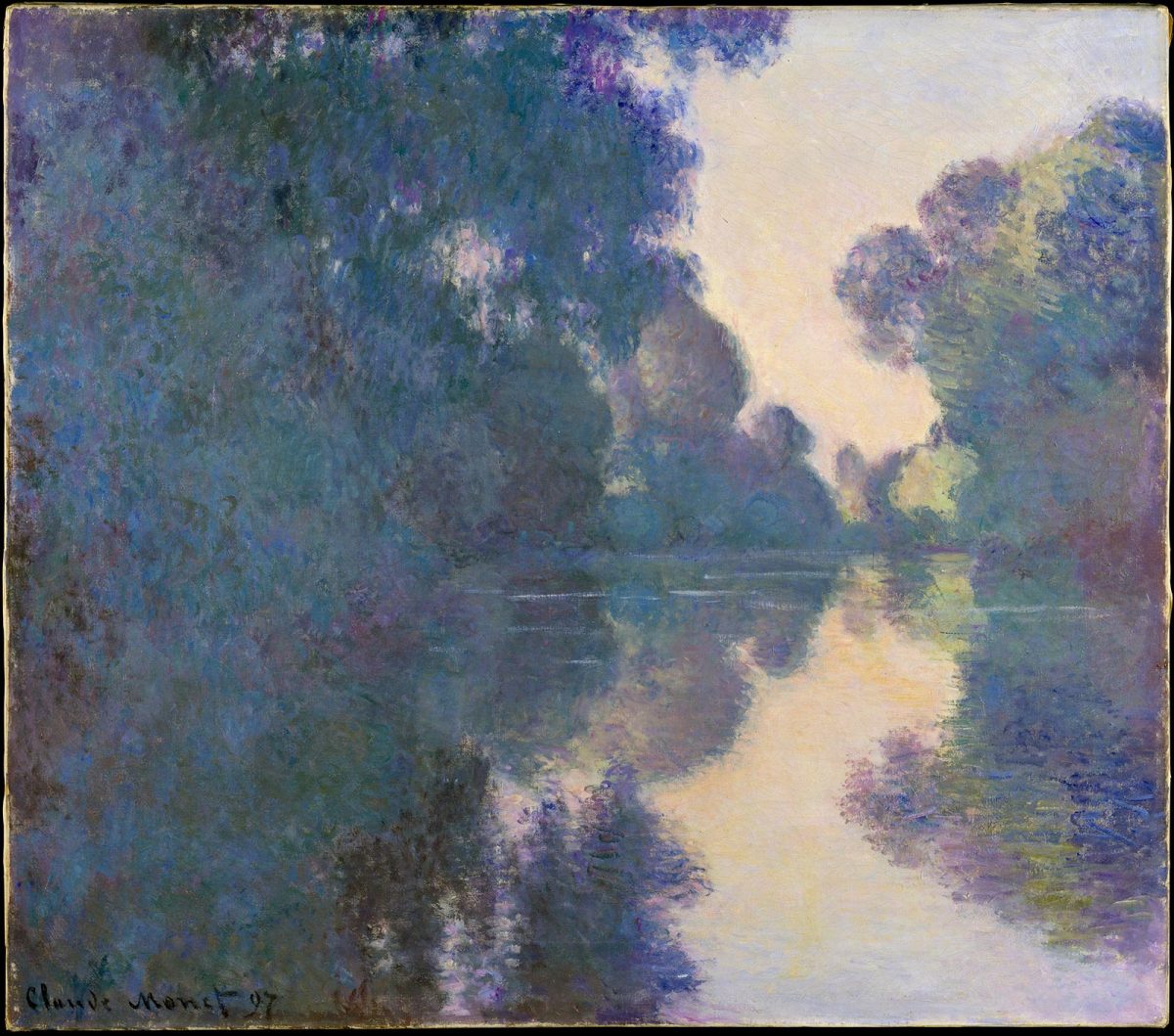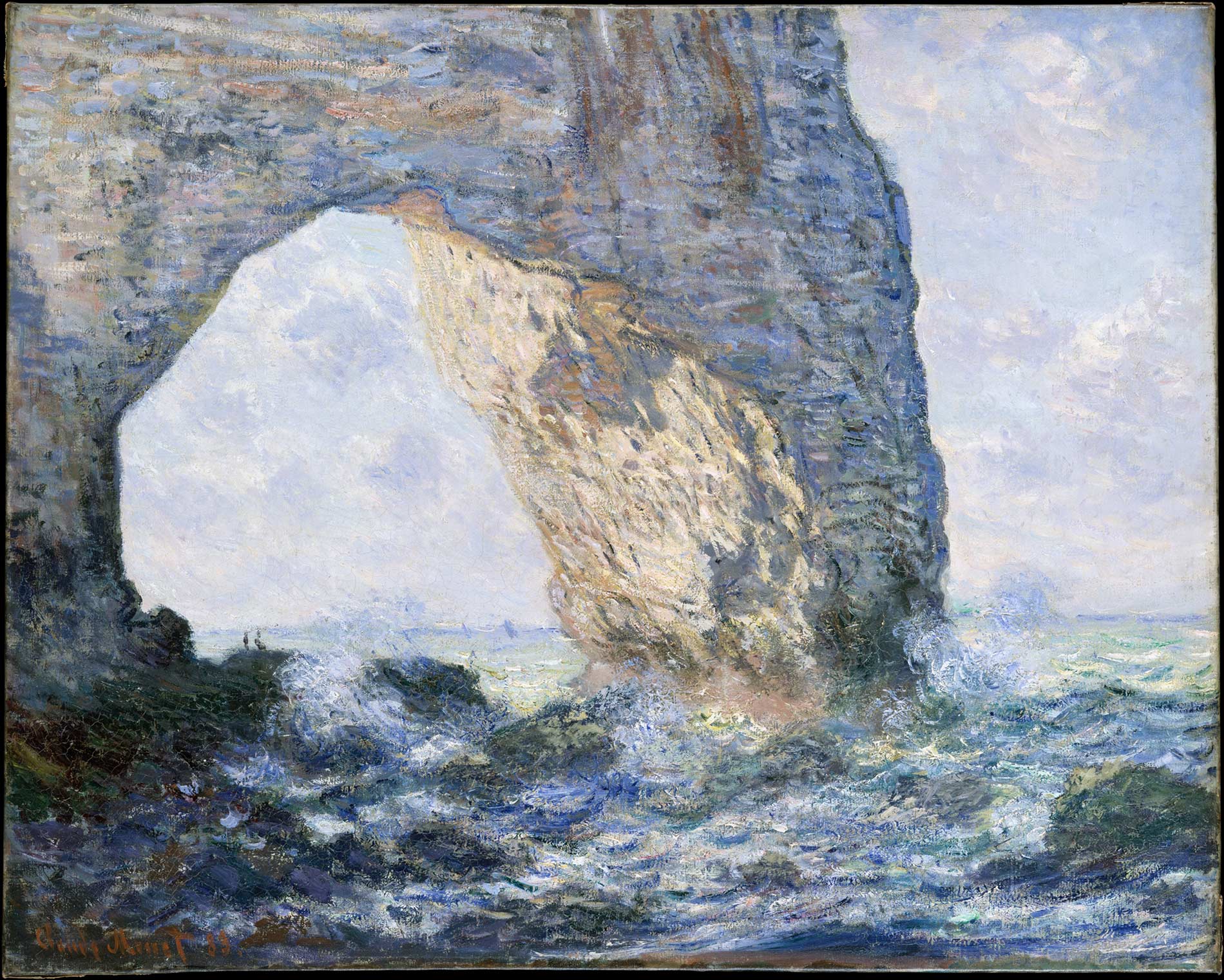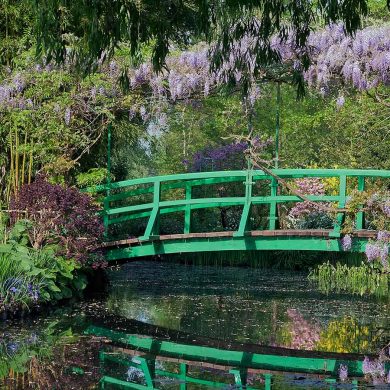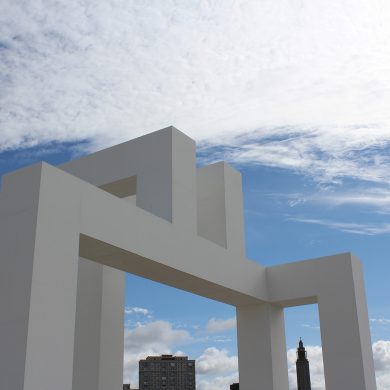Updated on 18 June 2020
Reading time: 3 minutes
From Paris to the sea, passing through Giverny, Rouen and Le Havre, Impressionism has left an indelible mark on this part of France. The Seine valley is where Impressionism was born and gave rise to an art movement that would revolutionise the history of art across the world.
Beginnings

It all began in Le Havre, with Monet’s painting Impression, sunrise (1872), the work that would give its name to the entire movement. Dabs and stabs of colour gave his subject a vibrancy and immediacy not seen before. Officially approved art at this time clung to a hierarchy of value that was topped by historical and classical scenes and religious works, attention to detail, finished glazed tonal techniques: all thrown over by Monet, Renoir, Pissarro and company. A new adventure in modern art.
Paris, Revolution in the Air

Artists of every stripe have always got a buzz from the capital of the Arts and its hectic pace of life. Degas captured the atmosphere of the opera backstage, Caillebotte the bustling boulevards and Renoir the teeming life in Montmartre.
Manet, Monet and Pissarro set up their easels here, only to meet severe criticism from the Official Salons: it wouldn’t be until the 1890s that anything like acceptability among the wider public began to take hold.
Paris is of course packed with places associated with Impressionism and holds the largest collection of Impressionist canvases anywhere in the world. At the same time the capital retains that bubbly, fun-loving, cutting edge spirit of adventure that artists adore.
The railway, new colours and new tubes of paint, folding easels, all were part of this expanding world, pushing the influence of the capital out into the country, inciting artists to work in the open air and take on new subjects.
The River Seine, Transporting Delight
The joy of everyday life bursts forth from their canvases. In Chatou, Bougival or on the Ile de la Jatte, this joie de vivre, precious moments of personal pleasure expressed through subject matter such as outdoor cafés or boating on the river is captured and since made eternal. Renoir’s Déjeuner des Canotiers or La Grenouillère by Monet are among the best-known works of this type.
The charming riverside village of La Bouille, on a loop of the Seine, is an excellent example of where easels travelled. Upstream, Rouen was a laboratory of light for Impressionist painters; with its changing light through any one day it was hardly surprising that Monet should choose it for his series of paintings on Rouen cathedral, or Pissarro for the riverside there. Then there is Giverny itself. Monet chose this village to create his garden and studio workshop in 1883. There, his life and his life’s work came together in such series paintings as the Haystacks and Waterlilies.
Normandy, a source of inspiration
The verdant valleys of the Normandy countryside, the bright, animated beaches and stunning coastal landscape, continue to be a source of inspiration. In Etretat, Monet found himself facing the famous hollow chalk needles, in Le Havre Pissarro was riveted by the port activity. In Dieppe, the harbour is depicted by Renoir and Eva Gonzales, one of the few women Impressionist painters. Get a taste of the atmosphere in the coastal town Honfleur, immortalised by Boudin, who was born here, and which harbours a host of art galleries and studios. Or reach back to one of the sources of Impressionism by heading west to the wilder coasts of the Cotentin in search of Millet.



